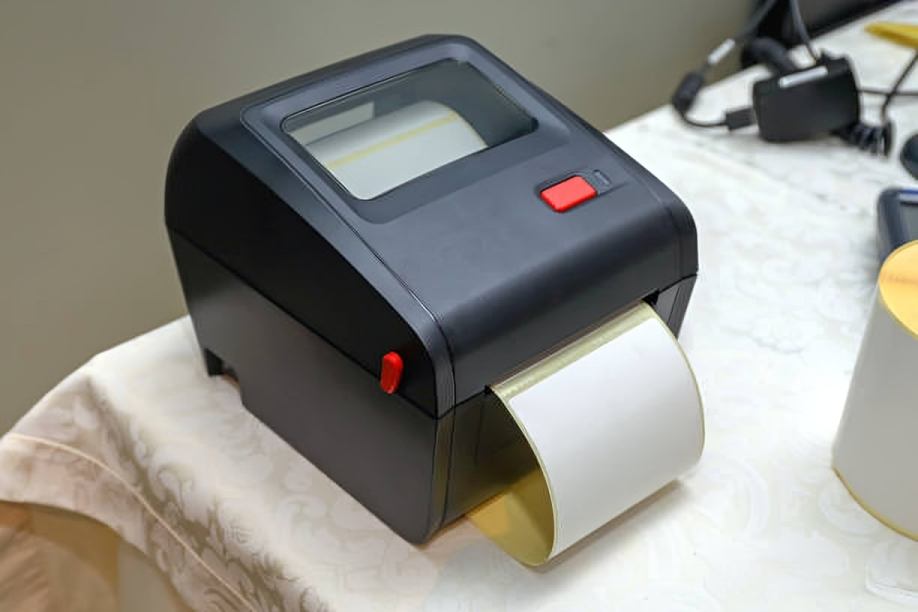
Top 10 Direct Thermal Label Printing Tips
Direct thermal label printing is a straightforward and efficient method for businesses to create high-quality labels quickly. Whether you're new to direct thermal printing or looking to improve your current process, these top 10 tips will help you get the most out of your direct thermal label printer.
10 Direct Thermal Label Printing Tips
- Choose the Right Printer
When selecting a direct thermal printer, it's essential to consider your specific needs. If you prioritize speed, look for a model with a high print speed. For industries requiring high-resolution labels, choose a printer with excellent resolution capabilities. Additionally, ensure that the printer offers the connectivity options you require, such as USB, Ethernet, or wireless, to seamlessly integrate into your existing setup.
- Optimize Label Sizes
The size of your labels can significantly impact their effectiveness. For example, smaller labels may be suitable for product packaging or shipping, while larger labels may be necessary for signage or industrial applications. Consider the information you need to convey on the label and the available space on your products or packages when determining the optimal label size.
- Keep Your Printer Clean
Regular maintenance is crucial for keeping your direct thermal printer running smoothly. Clean the printhead and rollers regularly using a soft, lint-free cloth and approved cleaning solutions recommended by the manufacturer. This practice helps prevent debris buildup, which can lead to smudged or distorted prints.
- Understand Thermal vs. Thermal Transfer
Direct thermal and thermal transfer printing methods each have their advantages and applications. Direct thermal printing is ideal for short-term applications like shipping labels or receipts, while thermal transfer printing offers greater durability and is suitable for long-term labeling needs, such as asset tagging or outdoor signage. Understanding the differences between the two methods allows you to choose the most suitable option for your specific requirements.
- Ensure Label Longevity
To prolong the life of your direct thermal labels, store them in a controlled environment away from heat and light sources. Exposure to heat and UV radiation can cause the labels to fade prematurely, compromising readability and durability. Additionally, consider using thermal top coatings or laminate overlays for added protection against abrasion and environmental damage.
- Troubleshoot Printing Issues
Printing problems can arise from various factors, including printhead alignment issues, media jams, or incompatible label materials. Refer to the printer's user manual for troubleshooting guidance, and familiarize yourself with common printing issues and their solutions. Additionally, leverage online resources, forums, or support channels provided by the manufacturer for assistance in resolving more complex issues.
- Follow Best Practices
To achieve optimal print quality and performance, adhere to best practices for direct thermal printing. Use high-quality labels specifically designed for direct thermal printing to ensure sharp, durable prints. Adjust print settings such as darkness and speed according to your label material and application requirements. Regularly calibrate your printer to maintain accurate print alignment and consistency.
- Store Labels Properly
Proper label storage is essential for preserving the quality and integrity of your labels. Store labels in a clean, dry environment with controlled temperature and humidity levels to prevent degradation. Avoid exposing labels to direct sunlight or extreme temperatures, as this can cause them to discolor or curl. Consider investing in label storage solutions such as climate-controlled cabinets or moisture-resistant containers for long-term storage needs.
- Choose the Right Label Material
Selecting the appropriate label material is critical for ensuring the durability and functionality of your labels. Evaluate factors such as the intended application, environmental conditions, and required durability when choosing label materials. For example, labels used in harsh industrial environments may require materials with high chemical resistance and temperature tolerance, while labels for food packaging may need to meet FDA regulations for direct contact with food.
- Utilize Printing Software
Printing software can streamline your labeling process and enhance productivity by offering advanced features and automation capabilities. Look for software solutions that provide intuitive label design tools, customizable templates, and batch printing functionality. Additionally, consider compatibility with your printer model and integration with existing systems such as inventory management or barcode scanning software for seamless workflow integration.
Final Thoughts
In conclusion, mastering direct thermal label printing involves a combination of technical knowledge, best practices, and practical tips. By implementing the advice provided in these top 10 tips, you can optimize your printing process, improve print quality, and achieve consistent results.
Have any questions or insights to share about direct thermal label printing? Feel free to join the conversation in the comments below!
